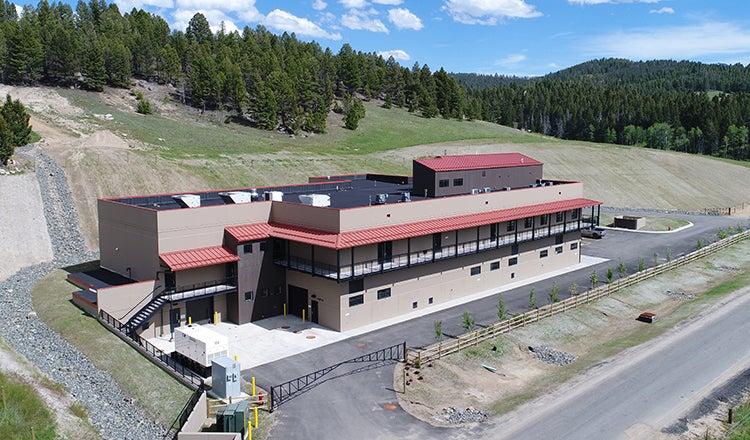Speaking of Design Ep. 6: A New Source of Pride for the Richest Hill on Earth

Once known as the "richest hill on Earth" for its wealth of mineral deposits, Butte became the first major city in Montana — and among the largest cities between Chicago and San Francisco — thanks to the boom of copper mining. But early 20th century mining practices led to serious environmental consequences, including contaminated local groundwater unfit to drink.
The city received its most pristine drinking water from the high-mountain Basin Creek Reservoir — so pure that it never required filtration, just the addition of chlorine before gravity carried it from the reservoir to people’s taps. But in 2011, the city’s water distribution system tested above maximum contaminant levels for disinfection byproducts caused by chlorine treatment, requiring construction of a treatment facility.
The resulting Basin Creek Water Treatment Plant shows off some of the flashiest technology in the industry. But on top of many engineering firsts, the facility’s story is rooted in the rich history of Butte, and has become a source of civic pride.
Subscribe
Featured on This Episode

Few engineers possess the ability of Nathan Kutil to communicate about their technical expertise. Nathan Kutil grew up in Rapid City, South Dakota, where he returned for his second bachelor’s degree — this one in environmental engineering from the South Dakota School of Mines and Technology. For more than a decade, he’s worked side-by-side with drinking water, industrial and wastewater clients to make them part of the design of the facilities they’ll eventually operate. That open communication has led to some of the most groundbreaking designs in the industry. Nathan is on the board of directors for the Northwest Membrane Operators Association and is a project manager at HDR. More about Nathan

Growing up south of Helena, Dan March was no stranger to historical mines. He even remembers seeing the Berkeley Pit while it was still an active copper mine. Dan’s love of math and science led him to a career as a senior water project engineer, where he’s had the opportunity to restore the environment of his lifelong community by cleaning up historical mine waste and restoring contaminated streams. He reflects on those projects as some of the most satisfying work he’s done as an engineer.

Jim Keenan is the chief operator for the Basin Creek Water Treatment Plant. When he walks into work each morning, he looks around and sees many of the original ideas he and his colleagues sketched out on napkins long before engineers had drawn detailed plans for the new facility. He’s particularly proud of how the plant quietly blends into the scenic landscape south of Butte, making a good neighbor to homeowners nearby.
Joe Griffin a retired hydrogeologist who spent the better part of 25 years working on two EPA Superfund sites in Butte, including more than a decade working for the Montana Department of Environmental Quality. Today, he’s part of the Citizens Technical Environmental Committee that helps educate the public about environmental issues in Butte.




